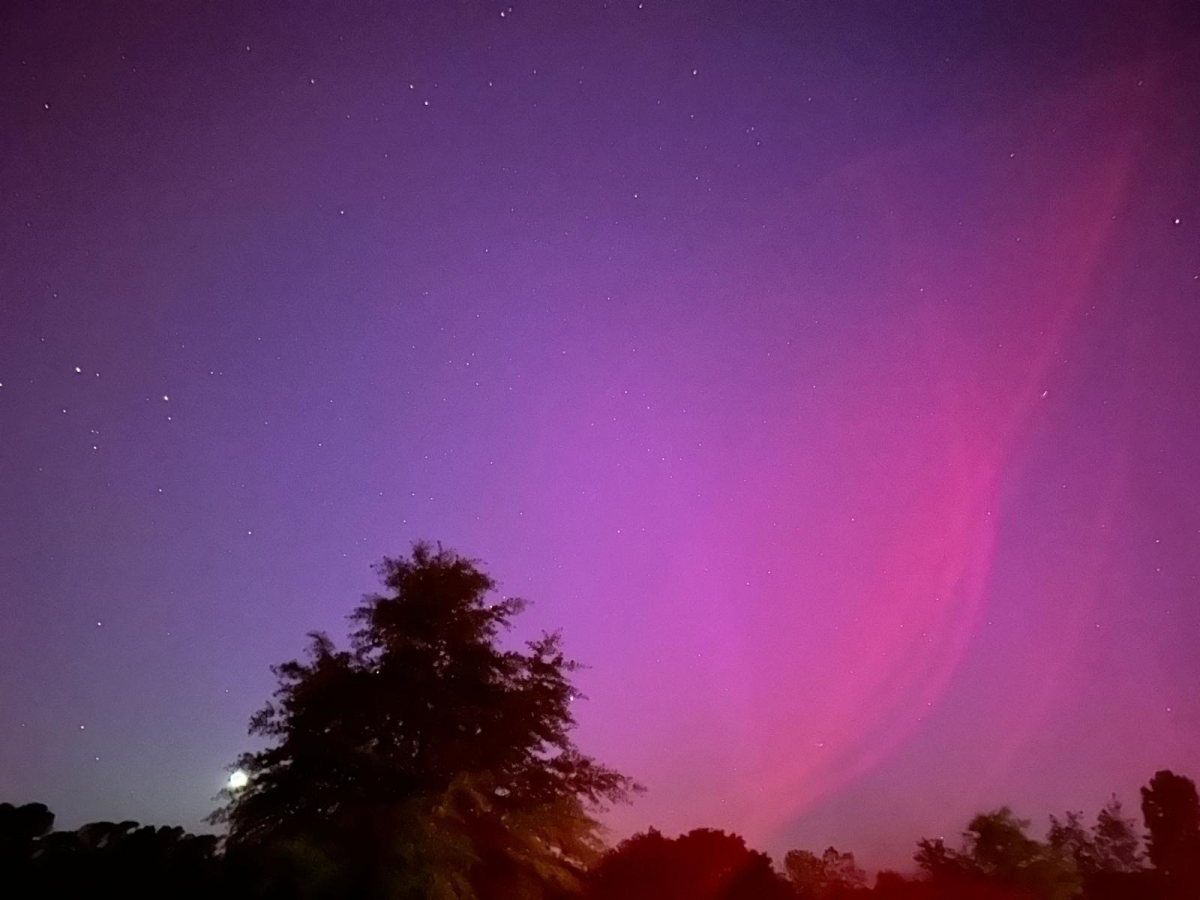The Northern Lights have long been revered as a symbol of nature’s infinite beauty, hidden to only those living at the extremes of the world and others willing to make the long trip there. However, unprecedented solar storms in Earth’s atmosphere caused these dazzling displays of light to be visible across much of the U.S. this past weekend, including most of north Georgia and surrounding regions. This spectacle, while usually only visible near the two poles, shone in full display around much of the country due to unusually intense coronal mass ejections in space, which are large-scale eruptions of magnetic field and other solar material. With this phenomenon blanketing much of the nation, many Lambert students took the opportunity to witness and capture this once-in-a-lifetime event.
“I drove a bit up north to see them [the lights] and they were really breathtaking,” Lambert junior Thanmayi Velaga said. “It’s just amazing that we get the opportunity to see nature in a way we’ve never seen before.”
To many, the lights were a symbol of wonder that signified the beauty of Earth and the rich depths of nature. In today’s modern world, taking the time to appreciate and preserve nature is an often overlooked aspect of life, but due to the buzz surrounding the Northern Lights, many were able to reconnect with and celebrate Earth’s natural beauty. This was encapsulated in the stunning pictures that netizens across the country captured of this rare phenomenon, making significant headlines and creating a new wave of interest in Mother Nature. Lambert students were no exception, with many taking stunning photographs of the Northern Lights in all their beauty – see below for more. While this phenomenon does bring astonishment and wonder to all in its path on Earth, it is also one that researchers are still trying to understand in greater detail, especially considering some of the other effects of this Aurora that are often overlooked.
For instance, while the solar flares causing said storms are regular occurrences in space, they have the potential to threaten these existing human systems when directed towards Earth. The SWPC (Space Weather Prediction Center) division of the NOAA (National Oceanic and Atmospheric Administration) reported moderate amounts of disruption to high-frequency radio as well as GPS (Global Positioning System) and power grids, raising concerns for further potential damage as the solar flares persist through the coming week. However, current forecasts report the ensuing impact to be considerably diminished compared to that of the past weekend, largely limiting the public focus to the potential of a second light show with the Aurora Borealis.
The Northern Lights have been a phenomenon that has both sparked curiosity and amazement in the general public as well as the desire for further research into its impact on communications and other human frameworks. As technology continues to advance along with the abundance of solar activity, it is clear that one will only be able to experience more such wonders as the human understanding of the universe continues to progress. For now, however, the focus will be solely on the Aurora Borealis and the potential of a second round of breathtaking skies over both Georgia and the world.















